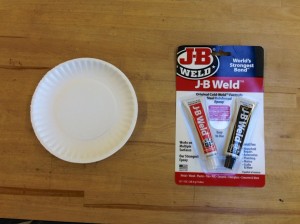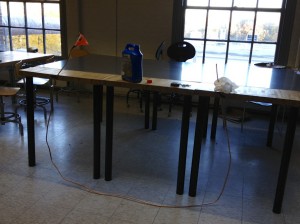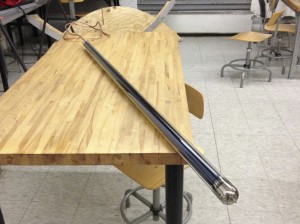Reaction Chamber
Dec 2nd, 2013 by huntek3
Copper Tube
The copper tube was initially filled with ethylene glycol and sealed on both ends. Epoxy was initially used as the sealant, and the idea was that the ethylene glycol would work as a transport fluid and allow heat exchange to occur more readily between the evacuated tube and the cooking vessel. The ends of the copper tube were crimped before being covered with epoxy and left to set for several days before testing.


The copper tube wasn’t fully straightened, however, so the epoxy on one end cracked due to forces exerted when straightening the pipe. The epoxy used to seal the tube was rated for 400 F and 320 pounds/square inch, though it was too brittle to withstand any movement of the pipe. For this reason, we soldered the end of the copper tube instead of re-applying the epoxy. The soldered end of the tube would go into the evacuated glass chamber on the reactor and be exposed to high heat and pressure.
Evacuated Glass Chamber
We ordered the evacuated glass chamber from a local shop. It consists of two concentric glass cylinders that are vacuum sealed together. There is a reflective coating on the outer surface of the inner cylinder, that acts as a heat sink. This reflective surface does not degrade until the vacuum is lost. The vacuum within the chamber greatly reduces convective and conductive heat loss, which allows it to collect much more energy. The vacuum inside evacuated tubes has been proven to last over 25 years. This longevity is especially useful in applications such as Ghana, where there is limited access to materials.


There is an aluminum fin within the evacuated tube which holds the copper tube in place and allows heat transfer to occur between the glass and the copper. The aluminum fin has some give which is useful when inserting the copper tube. When assembling the system, we found it was easier to insert the entire copper tube through the lengthwise slot on the fin, rather than inserting it through the end.